These small barriers, one upstream the other downstream from Pottery Road, are among several weirs established to reduce erosion during storm events by controling the velocity of the river. Because of concerns about fish habitat and the migration upstream of desirable species such as Chinook Salmon, it was decided, in the late 1990s, to modify several weirs including these two.
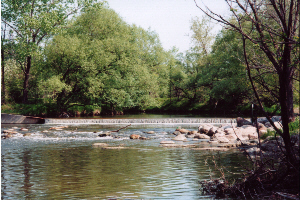
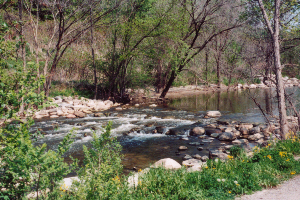
Reconstruction of Upper Weir, North of Pottery Road, May 1998
This project involved the replacement of the weirs with man made rapids. Three riffles were installed downstream from an existing weir to provide spawning and feeding areas for fish. The existing weir was not removed from the upper location and because of concern about erosion and Sea Lamprey migration a 90 degree overhanging “lip” was added. Sufficient height was maintained to prevent upstream movement of Lamprey, but low enough that Salmon could easily jumped. After construction of the rapids in 1997, salmon were observed a s far up stream as Lawrence Avenue. No sea lamprey have been sampled in the Don River over the past ten years.
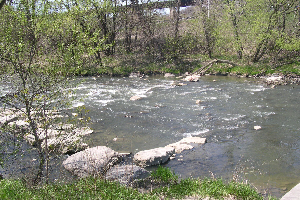
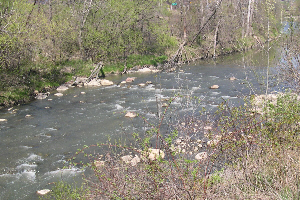
South Weir, May 2007
The Sea Lamprey, an eel-like primitive, jawless fish native to the Atlantic, was blamed for the collapse of the Great Lakes Lake Trout fishery in the mid twentieth century. It was politically unpopular to blame the real cause, over fishing. In the 1930s and 1940s, the sea lamprey had moved into Lakes Huron, Michigan and Superior and was given the blame for devastating commercial fisheries, particularly for Lake Trout. In 1959, the opening of the St. Lawrence Seaway allowed ocean-going freighters into the lakes and at the same time allowed many alien species to spread. They hitchhiked in the ballast water picked up in foreign ports.
By 1960, lake trout were nearly extinct in Lake Huron and most of the Great Lakes as a result of intensive commercial fishing and sea lamprey predation. They were extirpated from the main body of Lake Huron proper, but in 1970, a small population of native lake trout existed in McGregor bay off Georgian Bay, accessible to the lamprey, but with too many shoals for profitable commercial fishing.
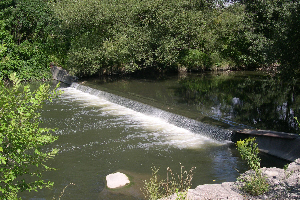
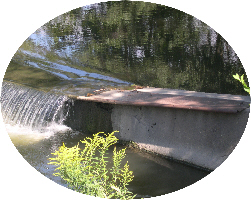
Upper Weir August 2007 and detail showing lip
By this time a major effort had been started aimed at re-establishing self- sustaining fish communities, mainly by reducing sea lamprey abundance, limiting the harvest of remnant native stocks, and stocking desirable native or exotic species. Many of these species have taken advantage of this and are now supporting productive fisheries. This suggests that continued exercise of these strategies will result in further improvement; however, new insights argue that enduring improvements in the fisheries require safeguarding and improving the quality of the fish habitat.
